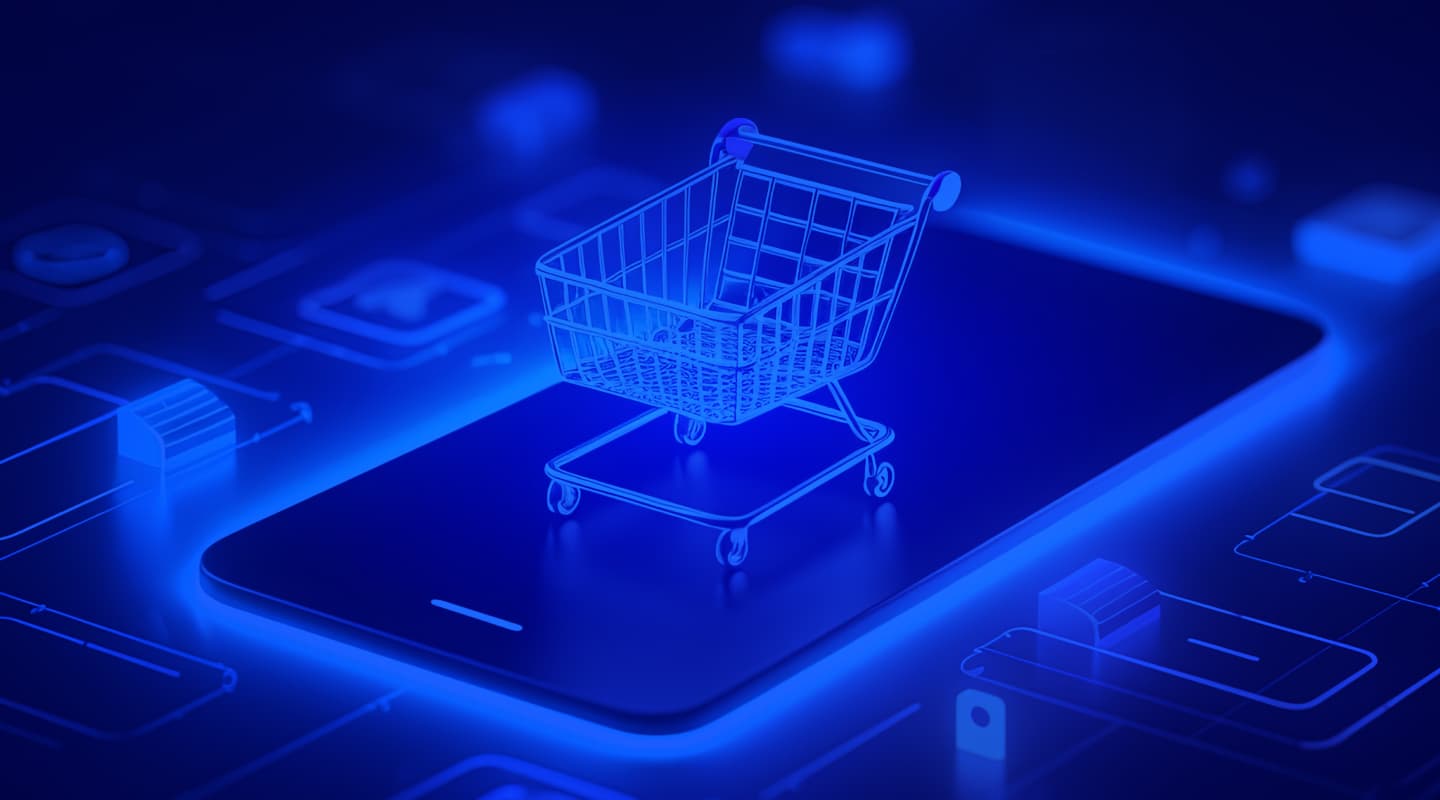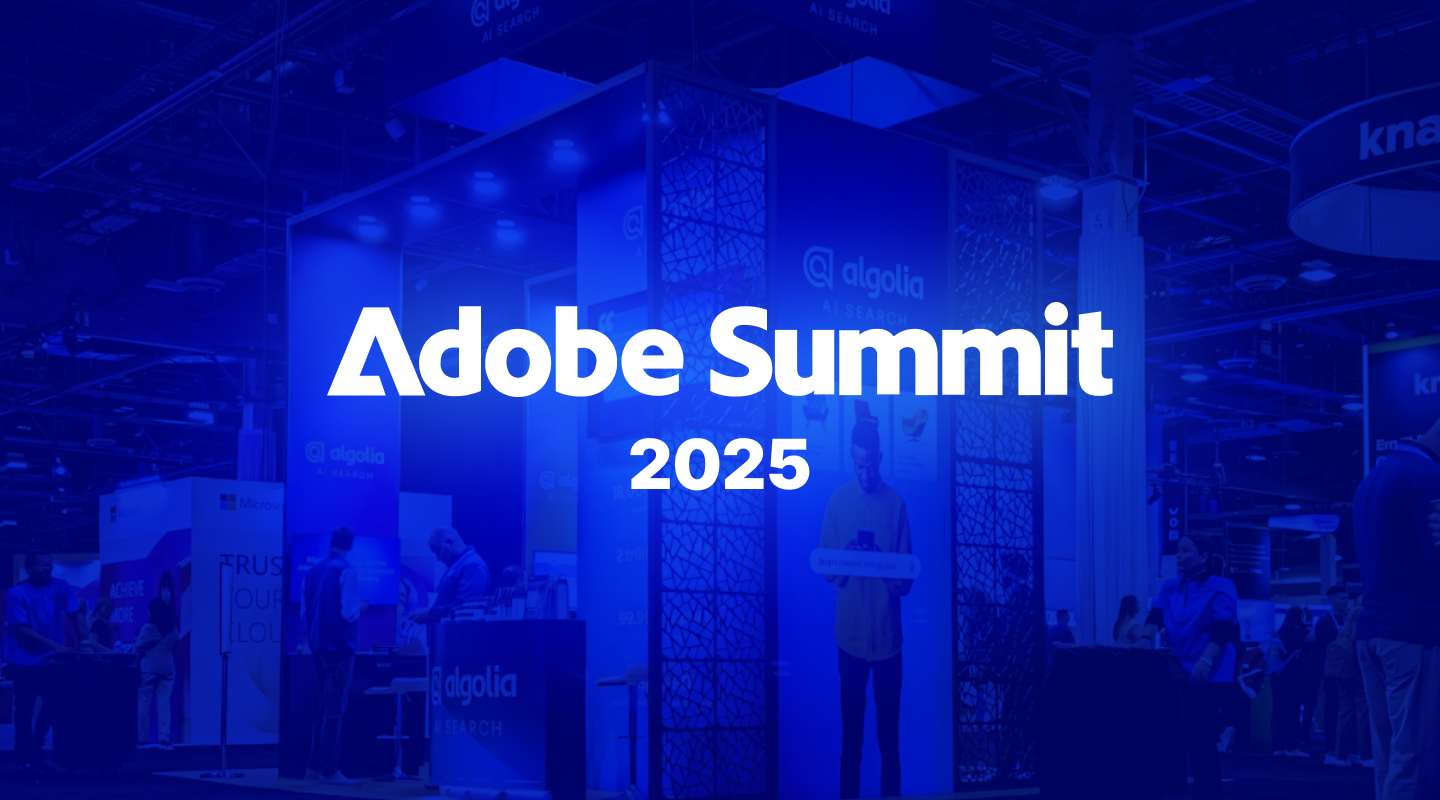What is digital commerce?
When people hear "digital commerce," many think it's just a new word for ecommerce—a buzzier version of selling online. But that misses the bigger picture. Digital commerce refers to the entire journey; it covers discovery, purchase, post-purchase support, and everything in between.
Whether you're running a flagship store, managing a product catalog, or overseeing your brand's marketplace presence, understanding digital commerce isn't just helpful—it's essential. In this guide, you’ll gain a practical understanding of what digital commerce actually is, why it matters now more than ever, the tech stack behind it, strategies that modern teams are using to stay ahead, and how to solve common implementation challenges.
Digital commerce vs. ecommerce: the real difference
Let’s start with a key distinction. Ecommerce is about transactions. A customer visits a product page, adds an item to the cart, pays, and gets a confirmation.
Digital commerce zooms out. It includes everything that happens before, during, and after the sale. From the first time a customer sees a product in a TikTok post or personalized email to post-purchase tracking and loyalty rewards—digital commerce ties it all together.
Think of ecommerce as a checkout lane. Digital commerce is the entire store, staff, and marketing campaign wrapped into one.
.jpg)
Why digital commerce? Key benefits for modern retailers and brands
Customer expectations are high. Competition is everywhere. And operational complexity is only growing. Digital commerce is your strategy for turning these pressures into advantages. A great case study to read: Learn how Harry Rosen, a luxury Canadian menswear retailer, built an omnichannel digital commerce strategy that led to a 360% increased conversion rate.
Increased revenue potential
With digital commerce, you're not limited to one channel or geography. You can sell 24/7, across D2C, B2B, and marketplaces. You can reach new customers via social commerce, while AI personalization boosts AOV with better cross-sell and upsell opportunities. Dynamic pricing engines adjust for market conditions in real-time, helping you stay competitive while protecting margins.
Better customer experience and loyalty
Digital commerce unifies touchpoints to create a seamless experience. AI personalizes content and recommendations so that every interaction feels relevant. In-store teams can access online order histories to resolve issues or make suggestions on the spot. With connected systems, loyalty programs and personalized offers become easier to deliver and scale across channels. The result? A cohesive experience that boosts customer satisfaction, deepens engagement, and drives repeat purchases.
For deeper insights into personalization’s business impact, resources like McKinsey’s personalization research or our advanced personalization guide break down how leading brands are leveraging this approach.
Operational efficiency and scalability
Digital commerce tools automate manual processes like inventory sync, order routing, and even merchandising copy. Composable tech lets you plug systems together instead of rebuilding from scratch. Integrated platforms (ERP, CRM, OMS, PIM) ensure teams work from the same data. You scale faster into new markets without the technical debt.
Greater business resilience and agility
Composable, API-first solutions help brands pivot fast. Need to support curbside pickup? Add a new payment method? Launch a pop-up site for a campaign? Digital commerce lets you do it with minimal friction. You’re not locked into a legacy stack—you’re free to adapt.
Competitive differentiation
Digital commerce lets you meet customers wherever they are. You can test campaigns, products, and fulfillment strategies quickly. Add immersive features like AR or voice search. Or build community through content and loyalty programs. These are the things customers remember—and competitors struggle to match.
Core components of a digital commerce ecosystem
Omnichannel architecture
Digital commerce starts with integration. Your website, physical stores, mobile apps, marketplaces, and social platforms must speak the same language. Unified inventory, real-time pricing, and consistent promotions give customers a smooth experience, no matter where they engage. Features like BOPIS (buy online, pick up in store), BORIS (buy online, return in store), and store-as-fulfillment-center strategies all rely on this foundation.
Scalable and flexible technology
Old platforms are rigid. Composable platforms are modular—you choose best-in-class tools for each function (search, CMS, checkout, etc.). Headless architectures separate the front-end experience from back-end operations. MACH (Microservices, API-first, Cloud-native, Headless) is the framework that enables agility, speed, and reduced vendor lock-in.
AI and automation
AI is fueling more than product recommendations. It generates product content, powers chatbots, optimizes inventory, and helps forecast demand. GenAI can auto-generate PDPs, while voice assistants and conversational commerce create new engagement paths. Predictive models tailor pricing, messaging, and channel mix based on real-time behavior. At Algolia, for example, we have recently released Guides, a new GenAI solution for businesses to generate buyer’s guides as they learn more about a product catalog.
Personalization and customer experience
Personalization is a key feature of digital commerce, and for good reason. There is an enormous amount of evidence that personalization improves response rates, and in the specific case of ecommerce, it improves the CX and boosts sales. For example, by understanding user intent, Algolia’s AI-powered search delivers more relevant results and a higher level of customer satisfaction. But personalization improves engagement across the customer journey from beginning to end, including email, ads, promotions and app-based interactions. Personalization is also crucial for loyalty programs.
Product discovery and merchandising
If customers can't find it, they can't buy it. AI-driven search tools like Algolia enhance relevance and speed. Filters and sorting adapt dynamically to user behavior. Augmented reality (AR) can show how a product fits in their home. Discovery becomes intuitive, which leads to fewer bounces and more conversions. Algolia merchandising gives merchandising professionals an intuitive way to use AI to automatically improve results or curate products manually by pinning products where they should appear or using rules.
Payments and checkout
Fast, flexible checkout is expected. Offer digital wallets like Apple Pay and PayPal. BNPL services like Klarna and Affirm give customers more ways to pay. Secure checkout, minimal fields, and recognizable trust badges reduce friction and cart abandonment.
Fulfillment, returns, and logistics
What happens after check-out strongly affects customer retention. Reliability beats speed. Shoppers are fine waiting—as long as it arrives when promised. Flexible fulfillment options (e.g., lockers, in-store pickup), free returns, and printerless labels all improve post-purchase experience. Returns aren't just a cost center—they're a competitive differentiator.
Advanced search and discovery
Search isn't just a feature; it's a growth lever. Fast, intelligent search solutions help customers find products quickly and personalize results in real-time. Algolia, for example, uses AI to match queries to intent, which drives both satisfaction and revenue.

Digital commerce strategies for today
Omnichannel execution
A truly omnichannel approach integrates inventory, promotions, service, and data across touchpoints. Shoppers start on mobile, switch to desktop, visit a store, and expect continuity. Brands that nail this win repeat visits and higher LTV. Customers benefit from consistent product data, pricing and promotions across all channels, as well as seamless customer service and support. An omnichannel architecture also supports a variety of convenient fulfillment options for customers, including BOPIS, BORIS, curbside pickup, and store-as-fulfillment-center models.
Hybrid marketplaces
Hybrid marketplaces refer to a selling strategy where brands offer products through both their own digital channels (like a branded ecommerce site or app) and third-party marketplaces such as Amazon, Walmart, or Target. This dual approach helps brands expand reach and visibility while still maintaining control over their direct customer relationships.
Selling through both your site and marketplaces expands reach. But it introduces complexity. Use marketplaces for acquisition, then shift customers to owned channels through loyalty programs, exclusive content, and perks.
Social commerce and influencer strategy
TikTok, Instagram, and YouTube aren’t just marketing channels—they’re storefronts. Influencers drive discovery. Live shopping events mimic QVC for the next generation. Make it easy to buy directly from these moments. That means linking products directly in posts, enabling one-click purchasing from videos, and ensuring a frictionless mobile checkout. The more seamlessly you connect discovery to purchase, the more likely you are to convert engagement into sales.
Ethics and sustainability
Sustainability is no longer optional. Gen Z and Millennials want eco-conscious choices. Think: recyclable packaging, optional carbon offset shipping, fair labor sourcing, and circular programs. These aren’t just checkboxes—they're decision drivers.
Digital commerce challenges + solutions
Even the most forward-thinking brands run into friction when scaling digital commerce. Legacy tools, rising expectations, and disconnected systems can turn even the best strategy into a patchwork of workarounds. Here’s what to watch out for—and how to solve it.
-
Siloed systems slow down personalization and create inconsistent experiences. Solution: invest in a CDP and real-time integrations.
-
Legacy technology blocks flexibility. Solution: migrate to composable or MACH architecture.
-
Rising expectations require faster, better service. Solution: automate fulfillment and invest in headless tech.
-
Scaling personalization is hard without resources. Solution: use AI for dynamic content and recommendations.
-
Channel conflict with marketplaces is real. Solution: control your pricing, diversify SKUs, and drive customers to owned channels.
-
High acquisition costs keep rising. Solution: double down on retention, referral, and organic growth strategies.
-
Organizational misalignment can stall progress. Solution: align teams with shared KPIs and training.
-
Tech overload wastes resources. Solution: test everything in pilots; only scale what delivers value.
-
Privacy regulations are tightening. Solution: stay ahead with consent-based, ethical data practices. Watch our 7 minute overview of how to deliver personalized experiences at a time of heightened privacy.
Tools and platforms
There is no one-size-fits-all stack, but there are categories that matter:
-
Commerce platforms: Shopify Plus, BigCommerce, Salesforce Commerce Cloud
-
Composable solutions: commercetools, Elastic Path, Fabric
-
Content and experience: Contentful, Bloomreach, Sitecore
-
Search and personalization: Algolia, Dynamic Yield, Nosto
-
Payments and checkout: Stripe, PayPal, Klarna, Adyen
-
Operations and fulfillment: NetSuite, Fluent Commerce, Loop Returns
-
Analytics and automation: GA4, Segment, Klaviyo, Mixpanel
Wrapping up
Digital commerce isn’t just a rebranding of ecommerce. It’s a connected, customer-first strategy that ties together discovery, conversion, and loyalty.
It demands flexible tech, smart automation, and a team aligned around customer outcomes. Done right, it scales faster, adapts quicker, and creates experiences that build lasting brand value.
Platforms like Algolia make this possible—with AI-powered search, GenAI content creation, and real-time personalization. If you’re ready to future-proof your business, connect with our team to learn how Algolia can help.
AI Search
The results users need to seeAI Browse
Category and collection pages built by AIAI Recommendations
Suggestions anywhere in the user journeyAdvanced Personalization
Tailored experiences drive profitabilityMerchandising Studio
Data-enhanced customer experiences, without codeAnalytics
All your insights in one dashboardUI Components
Pre-built components for custom journeys
.jpg)




